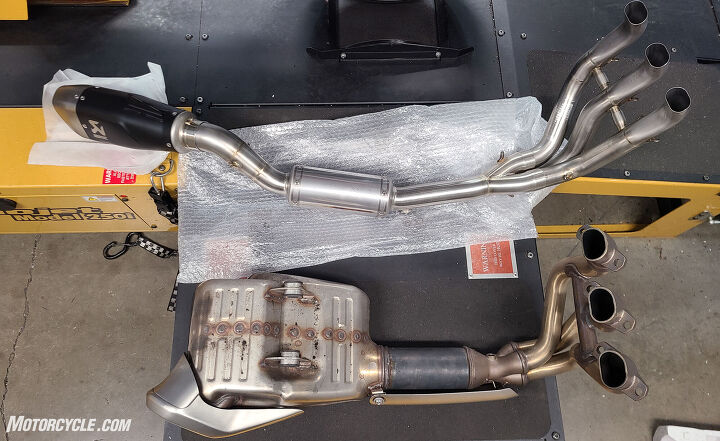Motorsports Racing News & Blog Articles
MO Tested: Triumph Trident 660 Akrapovič Racing Line Exhaust Review
The Triumph Trident 660 isn’t the first middleweight naked I would consider taking to the racetrack. Then again, sometimes I forget that some people only own one motorcycle that they use for everything. But, that didn’t stop Akrapovič from developing and manufacturing a closed-course only race-line full-system exhaust for it. I suppose if someone had to do it, it may as well be the Slovenians with their in-house titanium foundry and metallurgical laboratory.
Triumph Trident 660 Akrapovič Racing Line Exhaust| + Highs Lightweight Easy to install Doesn’t require re-mapping | – Sighs Track use only Loud It ain’t cheap |
Renowned worldwide, Akrapovič exhausts can be found in the most elite levels of racing – both in the motorcycle-verse and automotive. A common sight from MotoGP to MXGP and all the way to your local racing scene, the Slovenian company has been around since 1991, but has managed to amass more than 140 world titles to its name since 2000.
Out with the old, in with the new
For modern motorcycles – ones complete with sophisticated emissions systems anyway – an aftermarket exhaust should be considered for weight savings, aesthetics, and sound for most folks. If you’re looking for power, even a full system on its own is unlikely to produce much more than the stock unit thanks to automatically adapting O2 sensors, and modern engineering in general.
The stainless steel and titanium race system that we received weighs in at just under 10 pounds with all of its hardware – 3 lbs for the header, 3 lbs for the mid-pipe, 3 lbs for the silencer, and just under a pound for its hardware. The stock unit (with its required emissions internals) tipped the scales at 18 lbs. Eight pounds is not an insignificant weight loss on a 427-pound motorcycle, but given that the Trident’s stock unit was packaged so low on the motorcycle in the first place, it’s hard to notice any significant changes in handling right away. Resident racer, Troy Siahaan reminds us of the old racer knowledge that, “losing seven pounds is about equal to gaining the power of one horse.”
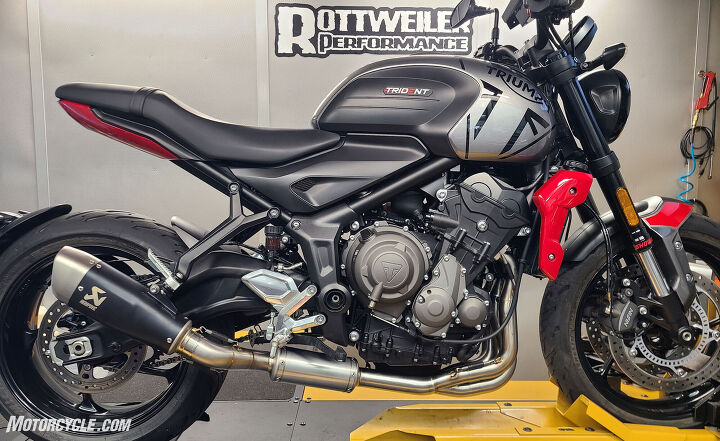
No catalyzers here. That silver bullet in the mid-pipe is a “specially tuned resonator”. So, in addition to being significantly louder, we’re also ignoring emissions standards, which is why this system is for closed-courses only.
Thank dog for naked bikes. Swapping a full exhaust system on a sportbike, or any other motorcycle that routes the exhaust in and out of or behind fairings can be much more of a headache, but not on the Trident. The only thing I had to remove to pull the OE contraption off and install the new Akra system was the lower radiator brace; with that removed, there was enough sway from the radiator’s top mount for me to get to the header bolts with ease. Akrapovič cites installation time at 60 minutes, but it really doesn’t even take that long with the Trident 660.
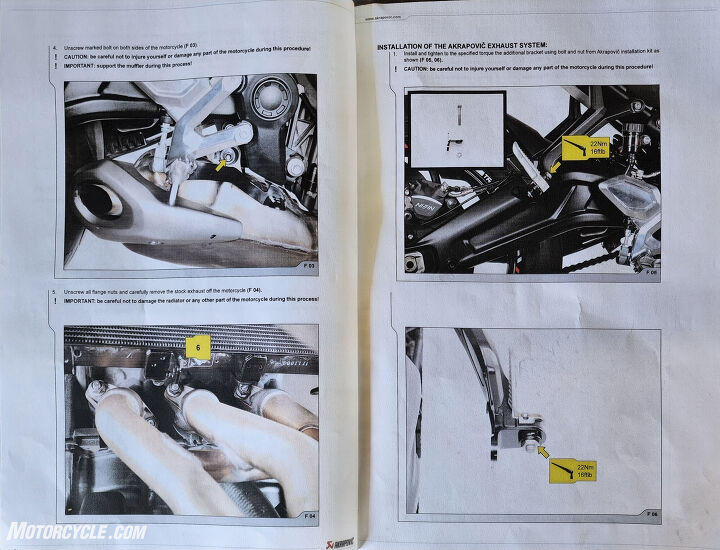
The instruction booklet complete with full-color photography and torque specs made the installation quick work.
Having a motorcycle bench or stands helps the process and won’t have you rolling around on your garage floor. Thankfully, since we wanted to dyno the bike before and after the installation, the good folks at Rottweiler Performance let me work on the Trident while it was still strapped to the dyno after our baseline run.
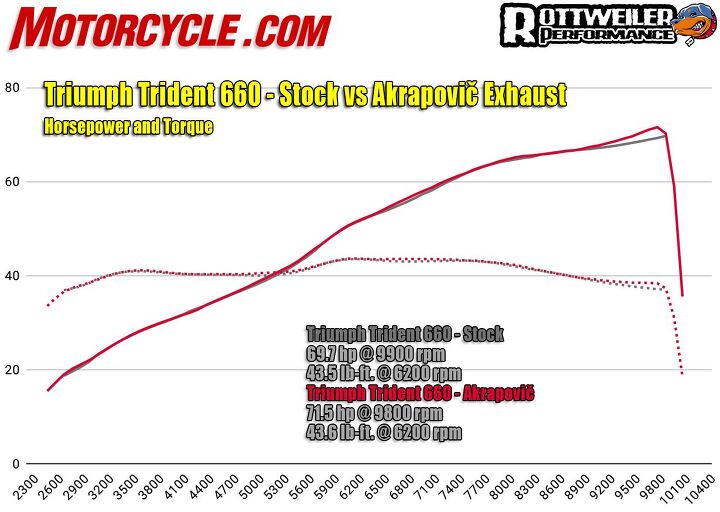
The Triumph Trident 660’s O2 sensor and computer automatically adjusted to the new exhaust, evident by the almost exactly overlaid lines above.
“I can tell you, it’s not going to make much of a difference,” replied Chris Parker, owner of Rottweiler Performance when we started discussing my dyno plans. Well, it turns out Chris was right. Given that he has developed multiple businesses centered around helping machines breathe easier, it’s not surprising that he could predict the outcome. Even still, Parker was a tad surprised by just how well the Trident’s O2 sensor and computer kept the curves almost identical. As you can see from our dyno runs, the only difference came right at the end just before redline which netted a 1.8 hp increase and just 0.1 additional lb-ft of torque. So, as we mentioned earlier, weight savings, aesthetic, and sound are the big changes you’ll get with the Akrapovič Triumph Trident 660 race exhaust.
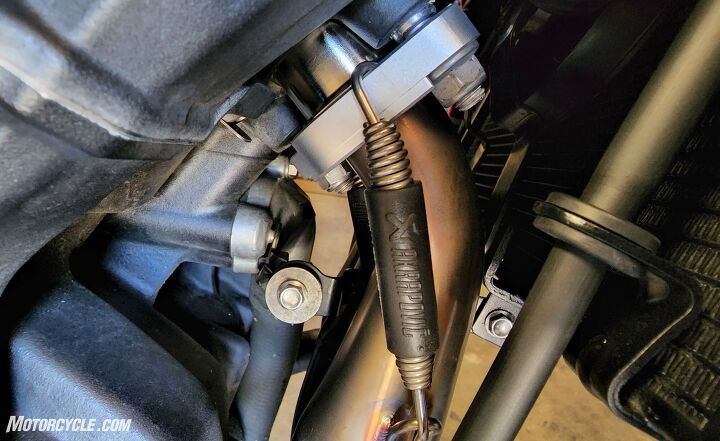
Those two 8 mm bolts holding on the lower radiator bracket were all that needed to be removed before dropping the old system and installing the new.
Also, as I’ve mentioned a few times in this article, this is a race-only system. It is not street legal and is intended for closed-course use only. What I’m saying is that it sounds like a race exhaust. We’re all fans of the song of the Triple around here, and this Akrapovič system lets its voice be heard throughout the land. Not a big deal at the track, but it would be a big deal to your neighbors, no doubt.
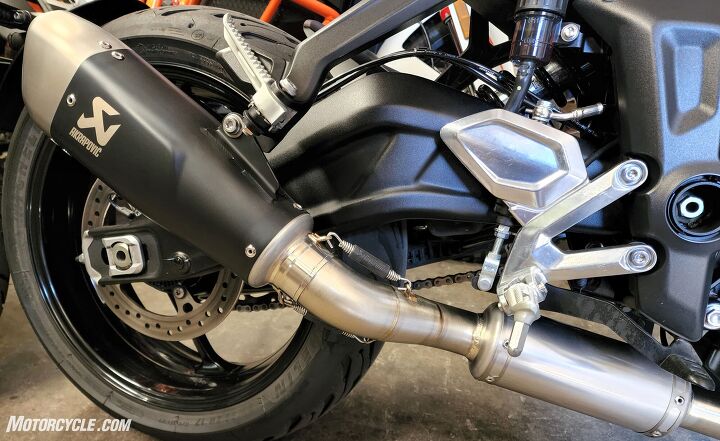
I didn’t have any clearance issues for my heels with the exhaust’s mid-pipe or silencer, but with size 10.5 boots, my heel was butted up against the passenger footpeg bracket when the front of the ball of my foot was on the peg. While the passenger footpegs are easily removable, the Akrapovič system uses the right side’s as a mounting location. Also, a heat shield is available to cover the last bend in the mid-pipe before the silencer for an additional $81.
At a retail price of $1554, the Trident 660 Akra exhaust isn’t cheap, but hydroforming and world-class quality craftsmanship aren’t either. A quick perusal of other full-systems for the Trident 660 has the Akrapovič unit coming in at the mid- to high-end in terms of price.
Take it to the track
Wait, what’s that? I’m not going to get to take it to the track? Thanks, Brasscannons. I guess we’ll just disregard all of my disclaimers about this Akrapovič system being for closed-course use only. I’ll just push it down the block before starting it so my immediate neighbors don’t hate me… maybe a few blocks.
What’s it like riding the Trident 660 with it’s ever-blueing new Ti exhaust? In a word, loud. In a street environment, that’s the biggest takeaway. I think it looks great, it sounds good, it’s just knocking at the door of being obnoxious while riding around town. Weight savings is always a plus, but the bike feels more or less the same as before.
It wasn’t that long ago that I used to rib Evans when he would talk about exhausts being too loud, “if it’s too loud, you’re too old,” I’d tell him. Well, maybe that time has finally come for me. Of course there are always exceptions like that insanely loud $50,000 Ducati Streetfighter V4 we had a while back – complete with a full titanium Akrapovič race exhaust.
What’s the takeaway here, you ask? Is it worth it? I suppose that depends on your goals and bank account. If you’re looking for a quick hit of power, you might want to look elsewhere. If you plan on this exhaust being a piece of the puzzle on your way to making your Trident more racy, go for it. For weight and noise, it’s got less of the former and more of the latter. Looks are subjective, but it does exude quality. If you’re looking to get your Triumph Trident 660 race-prepped, this could be a good bit of kit, just keep it off the streets, kid.
FAQ
Where are Akrapovič exhausts manufactured?
Akrapovič exhaust systems are designed and manufactured in Slovenia. The company even has its own in-house titanium foundry and metallurgical laboratory.
Are Akrapovič exhausts loud?
Well, I think we covered this thoroughly in the article above but still, it depends. If you’re looking at the company’s racing applications, yes they are loud. However, Akrapovič develops plenty of products for street use that meet emissions standards where they are sold those tend to be much quieter.
What do Akrapovič exhausts do?
Also touched on the article above, Akrapovič exhausts can add performance, reduce overall weight, changes the sound, and obviously, change the look of your motorcycle.
Additional Resources
MO Tested: Akrapovic Exhausts For Honda Monkey Does A Dented Exhaust Pipe Restrict Power? Best Sportbike Exhausts MO Maintenance: Repack Your Muffler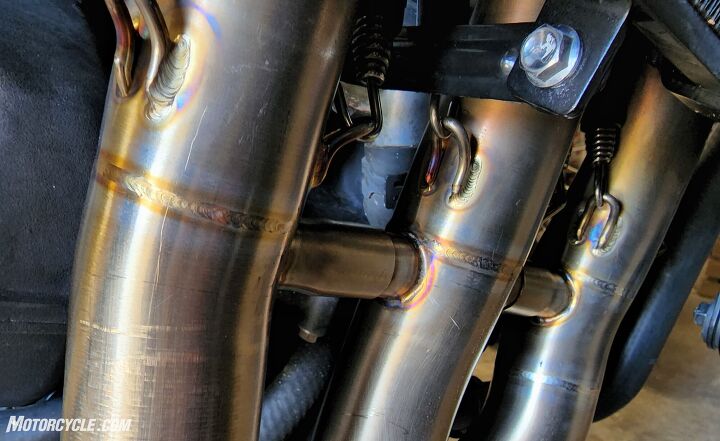
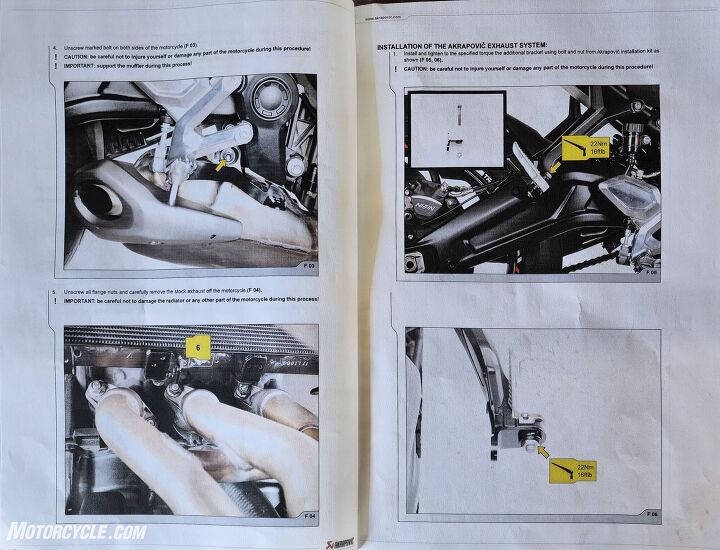
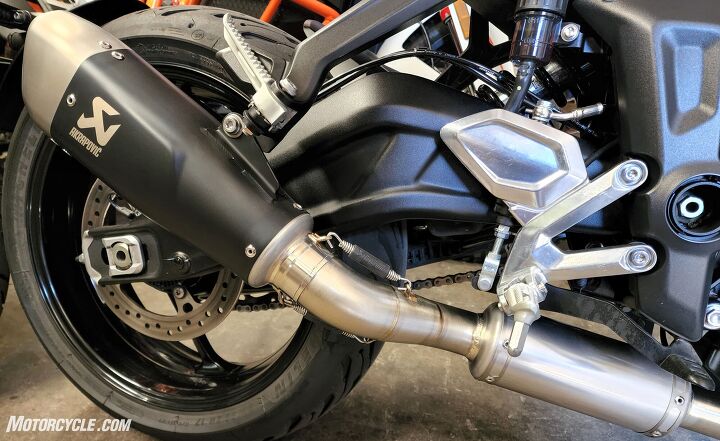
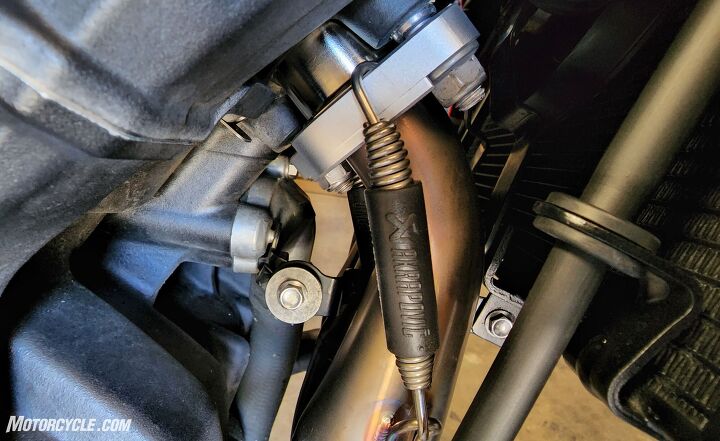
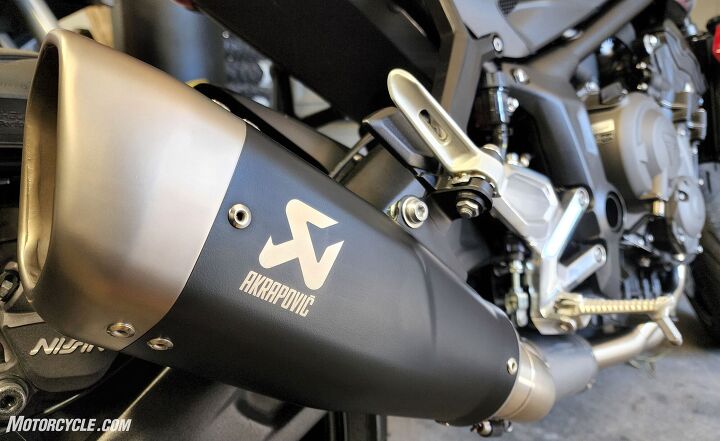
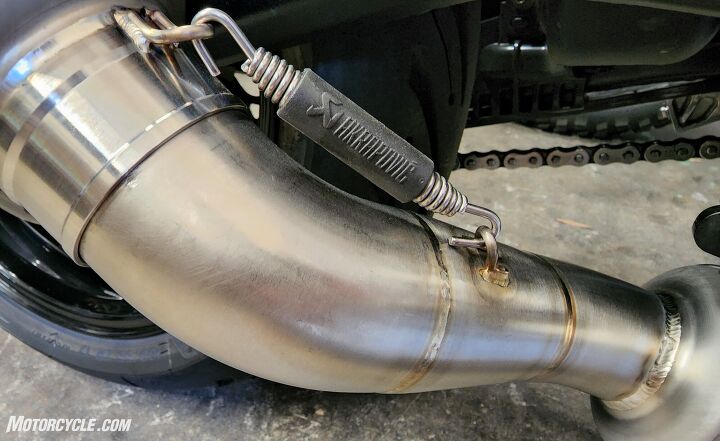
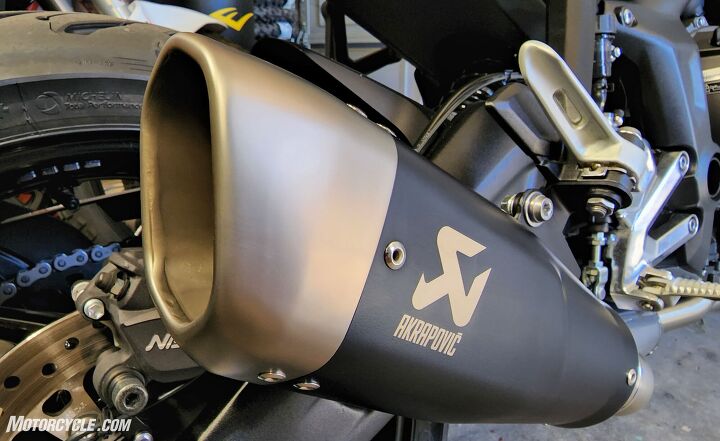
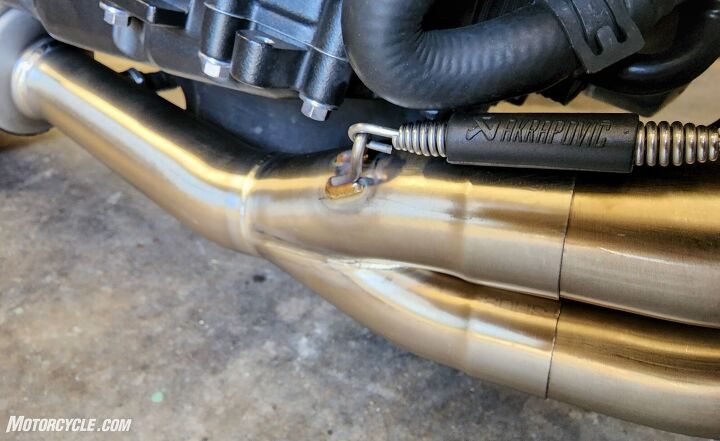
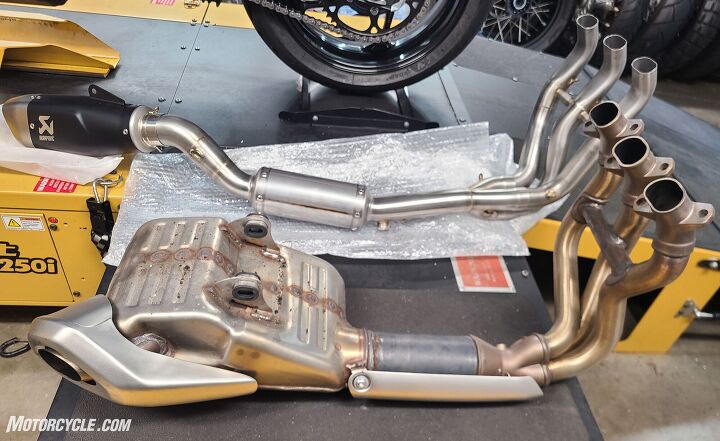
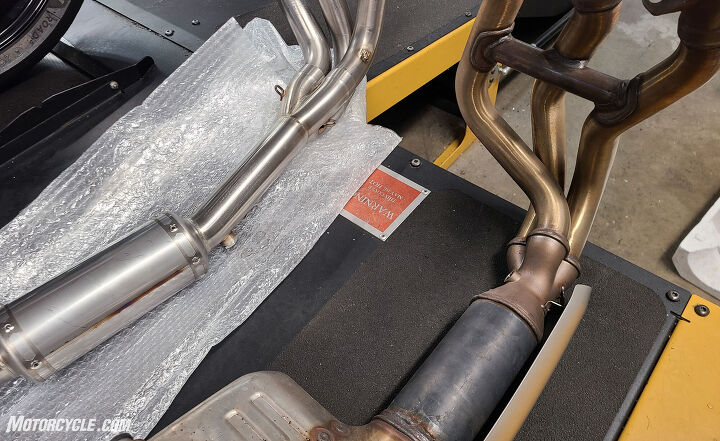
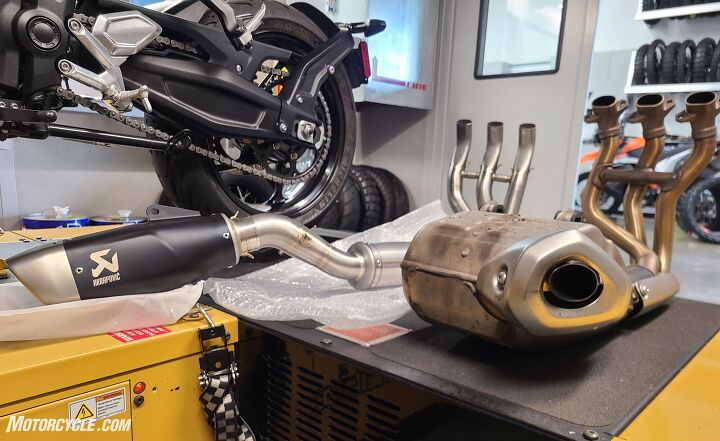
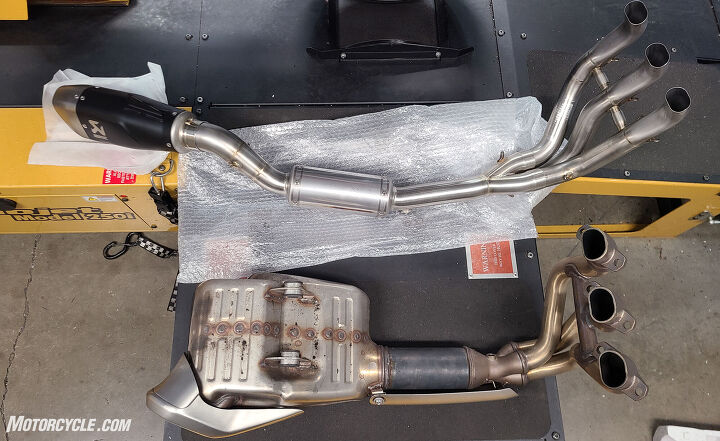
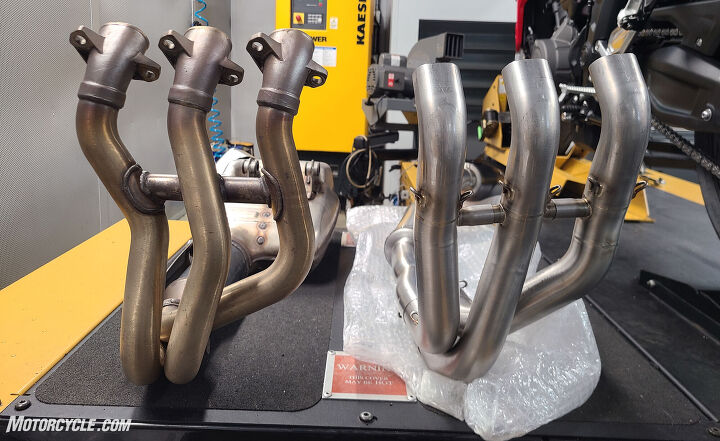
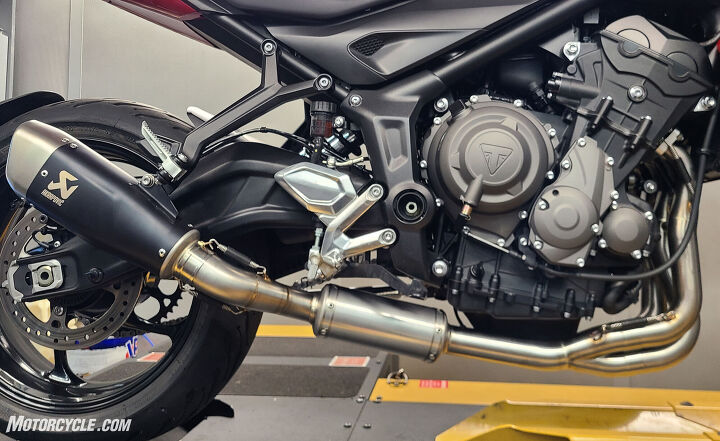
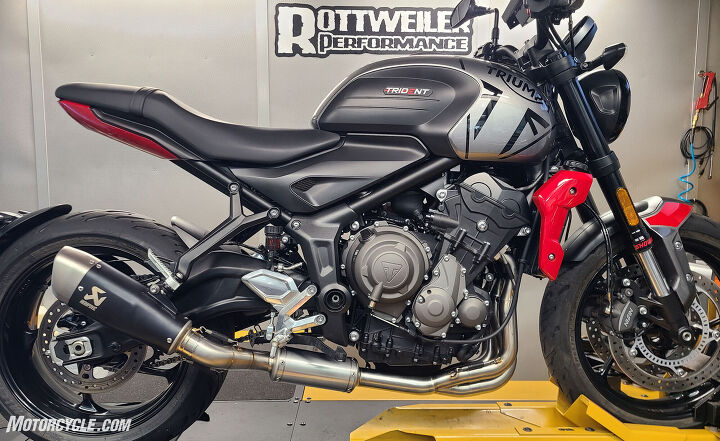
The post MO Tested: Triumph Trident 660 Akrapovič Racing Line Exhaust Review appeared first on Motorcycle.com.
Copyright
© Motorcycle.com


